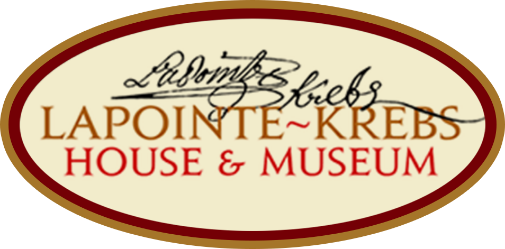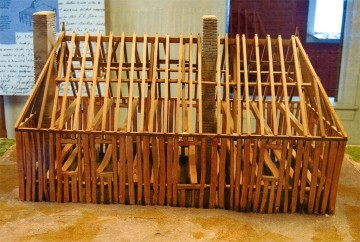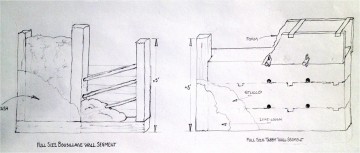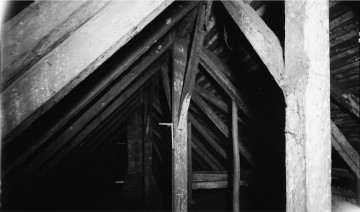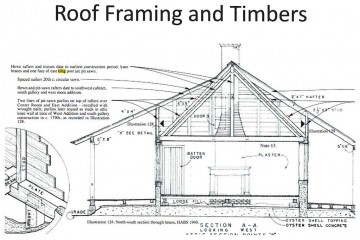
The LaPointe-Krebs House and Museum
History & Construction
The construction methods and material of the walls forming the original center room (1757) and eastern room (ca 1770) of the LaPointe Krebs house are unique and are the only example of this method on the Gulf Coast or anywhere else in the Colony of New France. The walls were formed from a material called tabby which is concrete-like and is created by mixing together quicklime and water with sand, ash, and locally found shell (primarily oyster) as aggregate. This mixture was packed into forms and allowed to harden into the 12″ thick walls that are still standing today.
Check out this video about how we make quicklime and tabby for maintenance and projects at the LaPointe Krebs House.
Learn even more about Tabby.
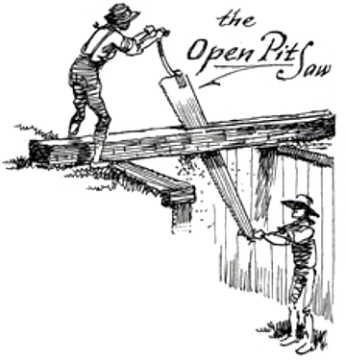
The wooden timbers included in the wall sections of the tabby are not intended as load bearing members (as they are less than half the thickness of the wall) but instead were placed in the forms and included in successive pours to be an attachment point for windows and doors and at the exterior corners for protection of the tabby.
The western room of the house (ca.1790) is different and is constructed in the traditional Poteaux-sur-sole (“posts-on-a-sill”) method of construction where the upright structural timbers were connected to the bottom sill timbers and upper plate timbers by pinned mortise and tenon joints. The areas between this timber framing were then fully filled with a material called Bousillage.
Bousillage is produced by mixing Spanish moss, or other fibrous material and silty soil which was then sufficiently wetted and formed into moldable loaf shaped portions and packed into the empty spaces between the timbers for the full thickness of the walls. After the Bousillage had dried, it would be covered with a protective coating of lime based stucco-plaster and/or a lime wash.
Learn more about Bousillage
The floors of all the rooms when first constructed were formed of above-grade tabby. The roof and the supporting timbered structure (King posts, rafters, purlins, and beams) were all originally hewn and then pit sawn timber. Today, most of these timbers are still in place. It is thought that the original roof ended at the exterior walls, but was later extended on the north, south and west sides to form the galleries and the two smaller rooms or “cabinets” that were part of the 1820 additions.
The location of the two cabinets can now be seen on the northeast and southwest corners of the galleries. This is shown by the additional timbering (part of the latest historical renovation) at the edges that would have supported the outer cabinet walls.
Based on remaining evidence, the house started out with two rooms and a fireplace but after 250 years of remodeling, the original fireplace was relocated, another one added, and additional subdividing interior walls were built, and by the turn of the 20th century the home had 4 rooms and the two attached cabinets.
